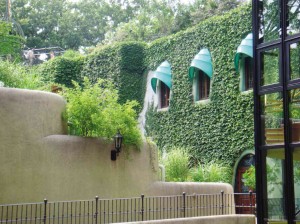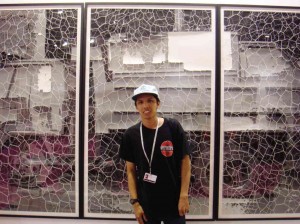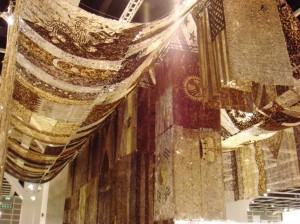Lifelong learning in museums and music halls
(First of two parts)
TAGS: exhibit, Art Basel, Ghibli, Hayao Miyazaki, Isao Takahata, animation, art, Hong Kong
If I were to describe myself in two words, “lifelong learner” would probably come to mind instantly.
I feel more like a student even when I’m giving lectures at the university. So many years after my doctoral studies, I still take down notes from books I read, lectures I hear online or at conferences, and historical facts I come upon on my travels. I keep volumes of notebooks on my desk, each one for a particular subject, topic, author or speaker.
I also spend hours in museums and music halls. There is no end to the learning that comes from such places.
I miss those years when my kids were still students and vacation meant traveling to other cities and visiting museums of art, science, history, industry, aviation and other kinds.
Article continues after this advertisementNow that my children are young adult professionals and living abroad, it is harder to find a common time for long trips together, but we still make sure to visit museums and do other activities conducive to learning.
Article continues after this advertisementThese days, they guide me where to go. We have always loved the classics—Louvre,
Prado or Hermitage—but I’m beginning to learn about new art forms.
Ghibli in HK
Ghibli is not a word familiar to any woman over 40 (ahem). So when we trooped to Heritage Museum in Sha Tin, Hong Kong, where there was a Ghibli exhibit in the summer, I almost gave up after seeing the long queue of visitors.
But then I became curious: Why were people crowding into this place with a name that a day before, I couldn’t even pronounce?
Luckily, we were wisely advised by a volunteer to consider buying a full-year family membership card so we could be on the shorter queue.
So what is so interesting about Ghibli?
For the uninitiated, Ghibli is the name of the studio in Tokyo founded in 1985 by two Japanese animation artists, Hayao Miyazaki and Isao Takahata, to house their collections.
What makes Ghibli animation so special is that the two artists insisted on producing their films the traditional way, which was by hand-drawn animation as opposed to using digital technology.
In this Hong Kong exhibit, some 1,300 items of layout designs were on display for the appreciation of young designers, art students, animation film lovers or people like me who just loved the pleasant, pastel colors, the simple lines and the wholesome stories. Much the way I like Tintin, a great contrast to violent and dark animated films.
In July when my daughter brought me along on her trip to Tokyo, her prize for winning a storytelling contest in Hong Kong, we visited the famed Studio Ghibli.
Visitors who are not from Tokyo can buy entrance tickets in Hong Kong and a few other designated cities.
On the preregistered date, we arrived at the studio early in the morning with a crowd already forming. I noticed that the visitors came from different countries.
We were ushered into a castle—no, not a mere studio. From one room to another, we could freely explore and observe the meticulous and rigorous production process of Ghibli’s animations. There were hundreds of color samples.
Each ordinary color we saw with our ordinary eye had some 50 other shades. Each sketch had a very definite color instruction, with color swags and a number code for every minute part of a drawing. There were different teams for different tasks—a team to reproduce the sketches, another team to fill in the colors, a team to put them together, and so on.
We were surrounded by beauty of sights and sounds. The uplifting music of the animations was a much welcome relief.
Just recently, it was reported that Miyazaki would get an honorary Oscar this November. With his recent retirement, Studio Ghibli may be facing an uncertain, or perhaps a different, future.
But then again, maybe Ghibli, named after the Italian word for Mediterranean wind, will blow a new wind through the anime industry.
Art Basel
By some happy coincidence, we were in Hong Kong when Art Basel was held there.
Hosting Art Basel for the second time, Hong Kong Convention and Exhibition Center in Wan Chai welcomed about 65,000 art lovers. I was fortunate to be among them, walking past some of the best artworks among the 245 galleries represented by artists of 39 countries.
Founded in Basel, Switzerland, in 1970, Art Basel is the world’s premier international show of modern and contemporary artworks by emerging artists. It is attended by art connoisseurs, dealers, curators, collectors and critics.
Although none of the above, I thought I should at least drop by for the fact that Hong Kong was only the third country to host this prestigious exhibit. The other two venues are, of course, Basel in Switzerland (since 1970), and Miami Beach in Florida (since 2002).
It was my first taste of contemporary art genres of such a wide spectrum in one building.
Visitors were greeted by a most impressive spectacle of 188 flags hanging at the entrance. In this work by Gu Wenda, titled “United Nations: Man and Space,” the flags were all made of human hair!
There was much interest in the art of Yang Yong Liang, a young contemporary Chinese artist. What looked like traditional Chinese paintings from afar turned out to be, upon closer look, urban city buildings sprouting out of the mountains. By using cutting-edge technology for the animations embedded on top of traditional paintings, the artist effectively expressed the message of nature versus urbanity. The delicate lines and minute details portrayed in the paintings of lighted waterfalls and skies were just amazing.
As I was peering closely at this east-meets-west, old-meets-new spectacle, I overheard someone from behind asking for the prices, to which the manager replied regrettably that all the works had been sold. The interested buyer and his companion then conversed in Filipino.
Speaking of Filipino, the works of Filipino artists Vermont Coronel Jr. and Troy Ignacio were selected for display at this prestigious festival. Their collections of three-dimensional cutouts of various media brought familiar objects of Manila to life.
Two other Filipino artists were exhibited on another floor, Coronel told me when I took a photo of his “Dumptruck” and congratulated him. Unfortunately I had no chance to visit the works of the other Filipino artists. It was a huge show and one needed more than an afternoon just to take a stroll around the area.
(E-mail the author at [email protected].)


